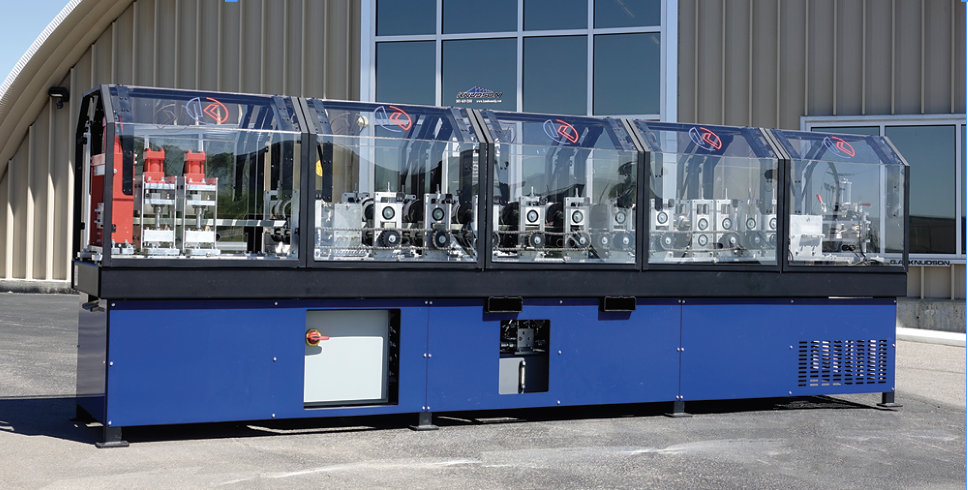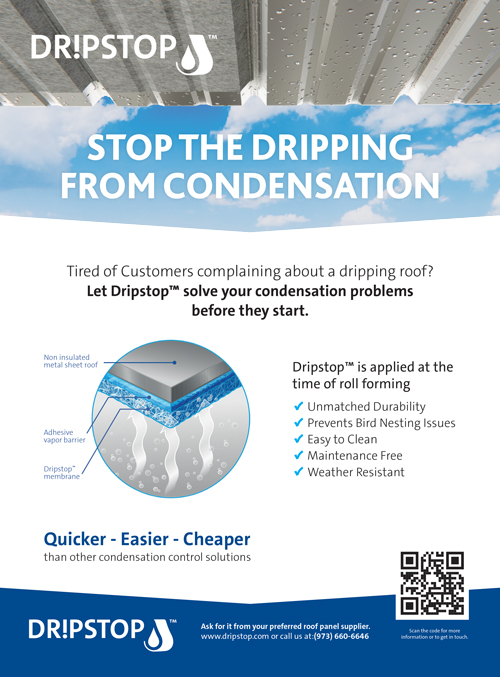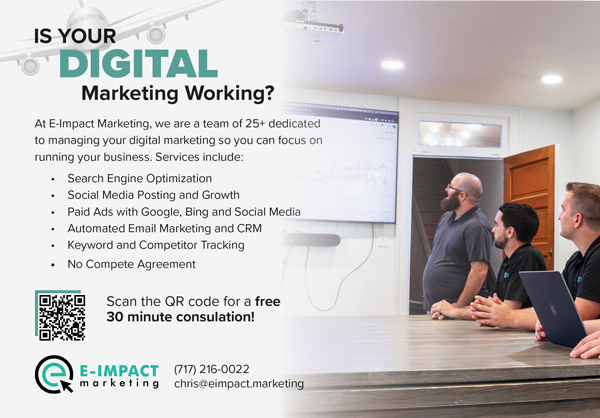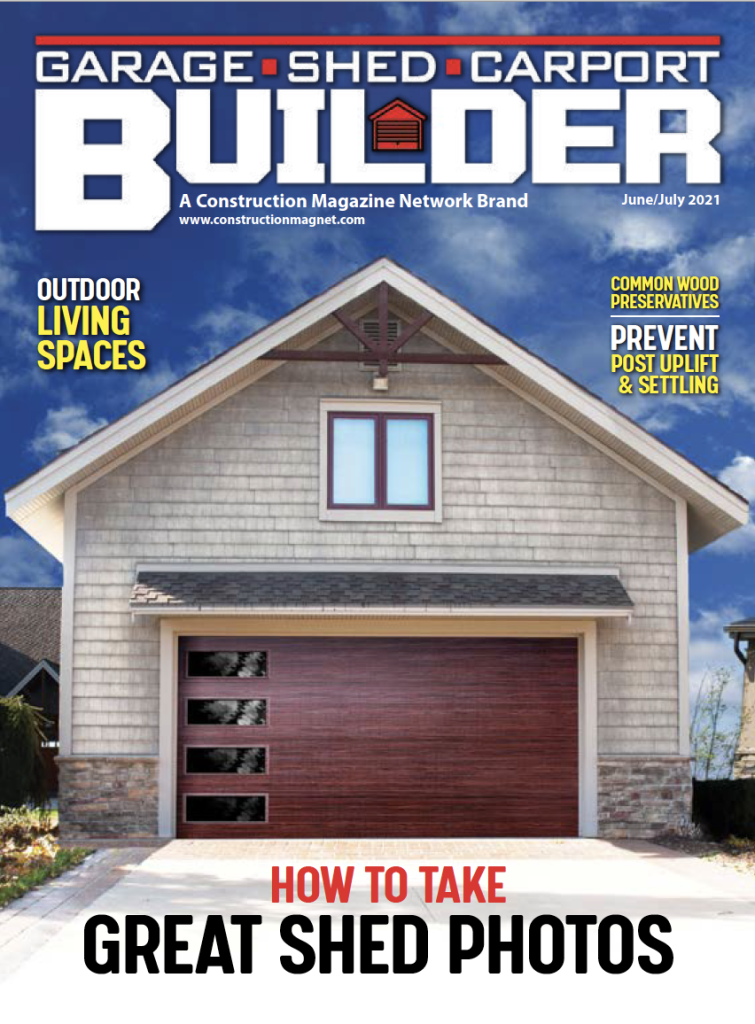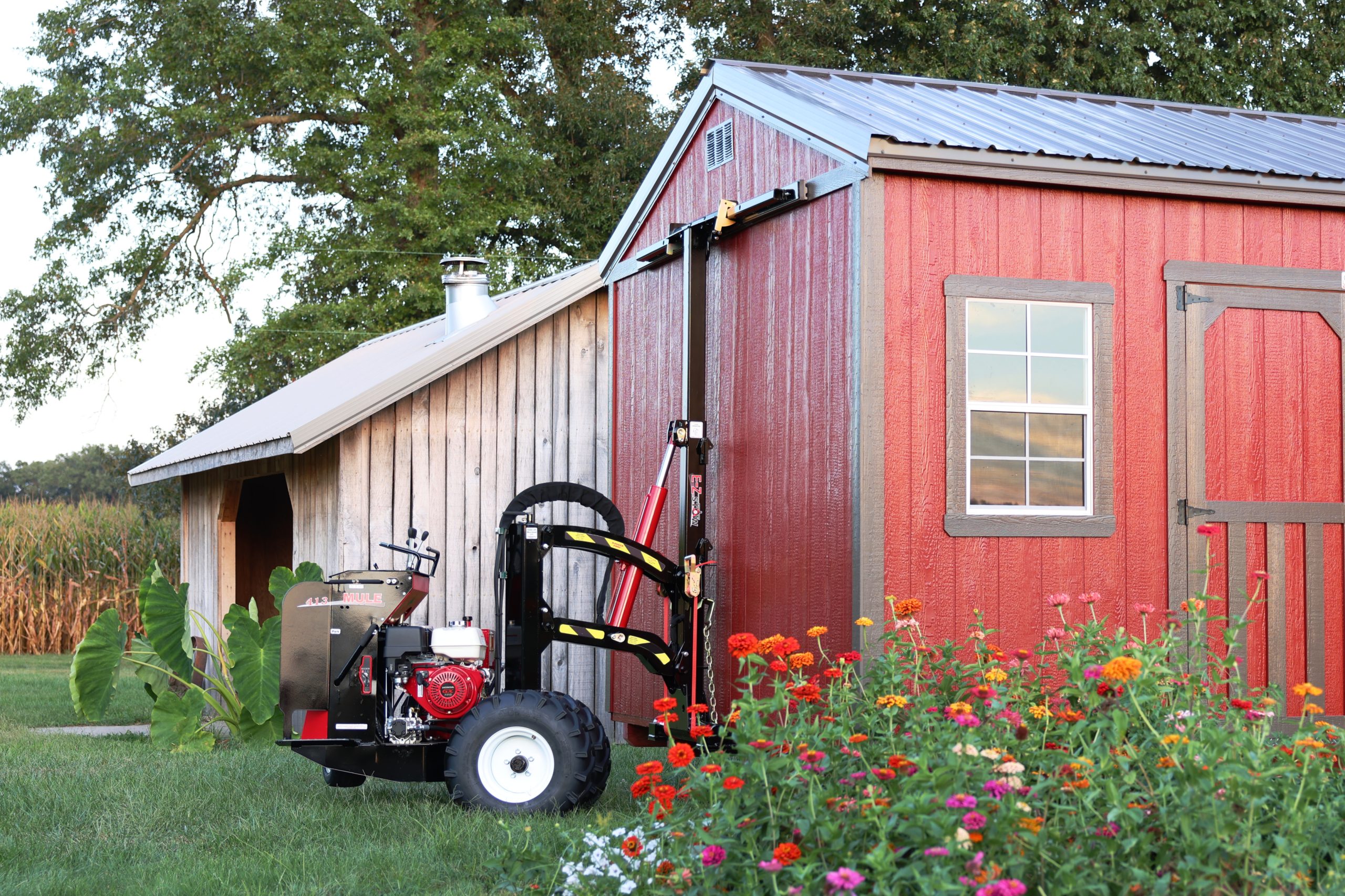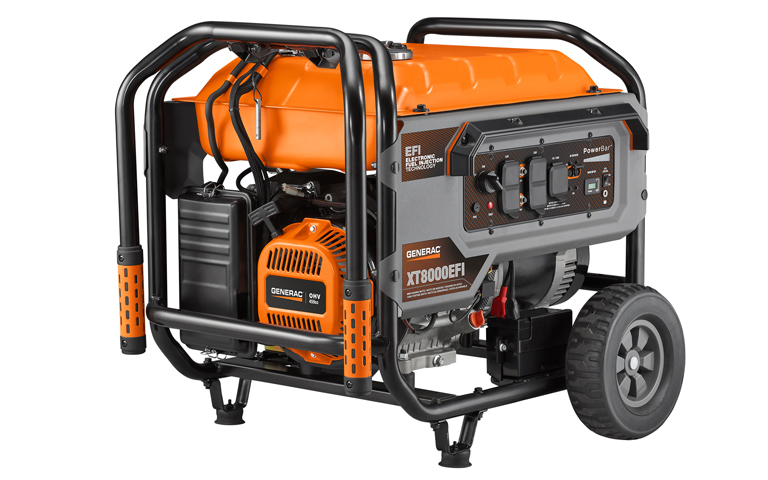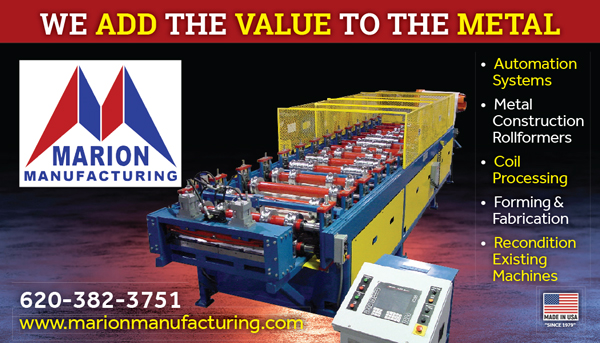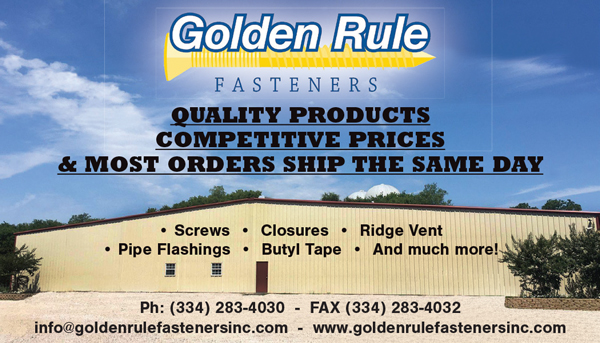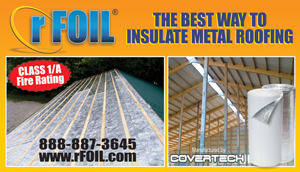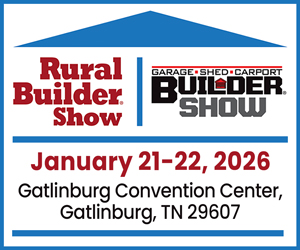Assists Shed Builders In Their Pursuit of Excellence
If you build steel-framed sheds and garages, delays in sourcing cold-formed steel (CFS) components can cause significant building delays. If you can get higher quality components – and get them faster than your competitors – it gives you a competitive edge. “One of the biggest solutions is getting into the business of fabricating your own components,” said Patrick Flood, Vice President at Knudson Manufacturing of Broomfield, Colorado.
Knudson has a long history of innovating when it comes to metal-working machinery. The company began manufacturing the first portable roll forming machines for making gutters on jobsites way back in 1957. Within a few years, the company had developed machines that formed roof panel, fascia, soffit, and valley panel. Knudson has since transitioned out of nearly everything except cold-formed steel framing components in the North American market.
“We actually had a very strong presence in roofing for a long time,” Flood said. “In the early 1990s we got involved in metal framing equipment, and we’ve almost completely evolved into framing now.”
Building with light gauge steel framing is a growing industry. “One of the biggest things about forming your own components,” he explained, “is there are significant improvements in quality. The quality of the components you produce yourself is much better than what you can get from a supply house.” When you source your components from a supply house, your only option is to buy stock pieces and modify them to fit your needs. When you make your own components, you can make them in the lengths you need and incorporate the service holes and features in the positions you want them.
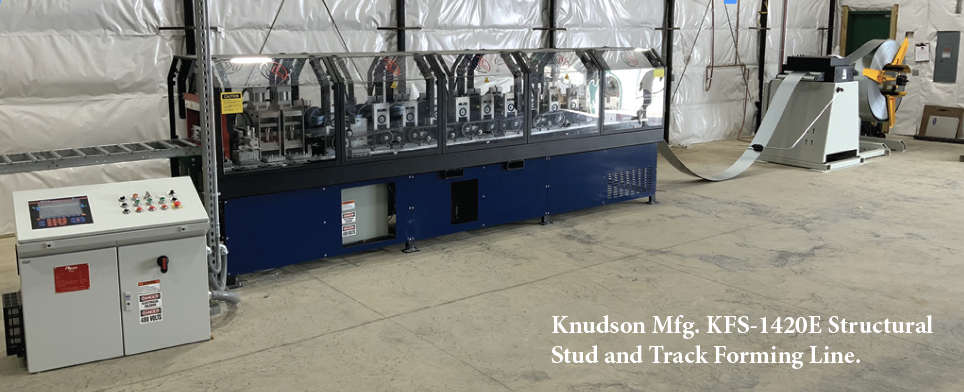
Incorporating computer-aided design (CAD) in the roll forming line results in less waste – of both time and materials. “As you evolve from the idea of preparing components for stick framing or prefabrication eventually you get to the point where you’re working with a CAD system of some kind to design products,” Flood explained. “With CAD you can get to the point where you can move your fabrication instructions from your software to your equipment electronically. If you’re doing it manually it can be very challenging. Transferring the instructions electronically is much more accurate.”
Knudson has been incorporating CAD in its systems for over 15 years. “We got into CAD systems around 2004-2005, and have been evolving in that direction since,” he said. “We now have a fairly sophisticated CAD-to-component system.” All of the component details, including quantity and length, dimples, web notching, and flange removal, are defined in the system. That information is fed into the equipment, and the machines do the rest. Controlled by Beck Automation or AMS Controls, in goes the raw steel, out comes ready-to-assemble components.
To make assembly more efficient, individual parts can be labeled. “The system can print with inkjet so it can print labels for parts as they are made,” Flood said. “Essentially, anything that appears as a data field [in the system] can be printed to label your part. It adds intelligence to your components as they’re being made, making it easier to put together and less chance of error.”
Exciting Developments
Due to the expense, space, and labor required, it’s understandable that relatively few builders will have the wherewithal to set up a full-blown roll forming system. However, Knudson is developing a tool system that will certainly be of interest to builders and contractors who work with stud and track. It’s a bench-mounted tool system that will allow builders to alter stud and track components quickly and accurately.
“It’s a series of standalone hydraulic tools, including a shear and a group of punch presses that can be used to process preformed components,” explained Flood. A supply house has only a limited number of components available; those components have to be cut and punched to work for any particular build. “The system will have a hydraulic power unit that will give you the ability to cut parts to length and to add holes to preform components. And guys can trim parts to length quickly and accurately with the standalone shear. We’re also developing a measuring system to go with it to do repetitive cut length and accurate hole positioning.”
Whereas a full stud and track roll-forming line may cost $200,000, the basic bench-mounted tool system will come to market at a small fraction of that.
Knudson Manufacturing Keys to Good Business
1 “We pursue what we call a best in class approach to the roll forming world,” said Flood. “In saying best in class, I mean we really specialize in mechanical design. We work with Beck Automation to provide control systems. They’ve been in the roll forming game for 25-30 years – they’re a top quality provider. We also work closely with Strucsoft Solutions (a software company based in Montreal). When people buy one of our roll-forming systems, we don’t try to put everything under a single umbrella. We work intentionally with people we believe are the most effective providers in the different facets of systems we deliver … For us, we really pursue a ‘best in class’ philosophy rather than a ‘do everything yourself’ philosophy.”
2 “We shop locally. We do all of our own in-house design work and assembly,” he continued. “All fabrication is done locally in Colorado. We work with local vendors with welding, frame building, powder coating, painting, milling — pretty much all the processes involved in making the parts and components. We believe very strongly in shopping locally first. We’ll always buy across the street first – in our vicinity. We’ll always shop U.S. before we go out of the country. It’s amazing how many people ask us if our equipment is made in China – absolutely not. It’s made in Broomfield, Colorado. We’ve found favor with our audience because everything we do is American made.”
3 “We work very hard to provide clients with what they need. When you begin looking at all of the different facets of light gauge steel framing, there are complexities involved. We work hard to identify and understand our clients’ needs so we’re providing them with what they need. Along with that, we sell to a lot of people who don’t come from roll forming. We sell a lot to people who come from construction who don’t have a lot of experience. We work hard to educate our customers about the entire process – everything from making parts to buying steel to contending with CAD systems and electronic information. We work hard to make sure they’re as educated as they can be and making educated buying decisions.”


